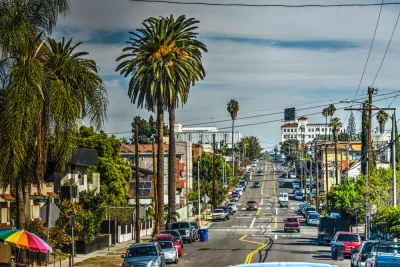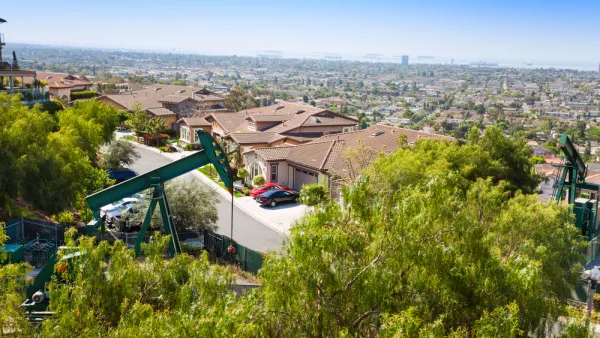Residents of Los Angeles who drive less are exposed to higher rates of air pollution due to policies that have encouraged commuting through low-income neighborhoods.

“Los Angelenos who drive less are exposed to more air pollution, as commuters from predominantly white neighborhoods travel through non-white areas,” according to a new study from the USC Sol Price School of Public Policy. A larger share of the city’s non-white residents experience air pollution than their white peers, regardless of their income.
As Christian Hetrick explains, this is in large part a result of historical planning decisions that discriminated against communities of color. “Twentieth-century planners bulldozed urban areas to build freeways for suburban residents to drive to job centers. Although whiter and wealthier areas like Beverly Hills successfully blocked such projects, similar opposition efforts failed in less-white and less-wealthy parts of L.A., such as Boyle Heights, which was carved up by five freeways and two enormous interchanges.”
The study’s authors suggest some policy fixes that could begin undoing these inequities. These include raising fuel efficiency standards and promoting cleaner transportation, enacting congestion pricing and promoting remote work to reduce driving, and reforming zoning laws to permit more housing construction in job-rich areas and less polluted neighborhoods.
FULL STORY: Pollution Paradox: Study finds L.A. residents who drive less are exposed to more air pollution

National Parks Layoffs Will Cause Communities to Lose Billions
Thousands of essential park workers were laid off this week, just before the busy spring break season.

Retro-silient?: America’s First “Eco-burb,” The Woodlands Turns 50
A master-planned community north of Houston offers lessons on green infrastructure and resilient design, but falls short of its founder’s lofty affordability and walkability goals.

Delivering for America Plan Will Downgrade Mail Service in at Least 49.5 Percent of Zip Codes
Republican and Democrat lawmakers criticize the plan for its disproportionate negative impact on rural communities.

Test News Post 1
This is a summary

Test News Headline 46
Test for the image on the front page.

Balancing Bombs and Butterflies: How the National Guard Protects a Rare Species
The National Guard at Fort Indiantown Gap uses GIS technology and land management strategies to balance military training with conservation efforts, ensuring the survival of the rare eastern regal fritillary butterfly.
Urban Design for Planners 1: Software Tools
This six-course series explores essential urban design concepts using open source software and equips planners with the tools they need to participate fully in the urban design process.
Planning for Universal Design
Learn the tools for implementing Universal Design in planning regulations.
EMC Planning Group, Inc.
Planetizen
Planetizen
Mpact (formerly Rail~Volution)
Great Falls Development Authority, Inc.
HUDs Office of Policy Development and Research
NYU Wagner Graduate School of Public Service



























